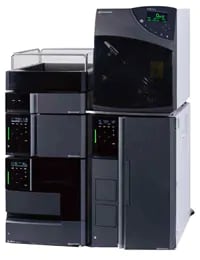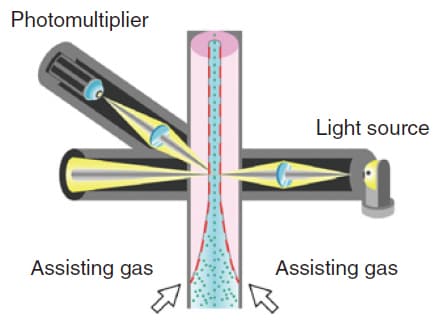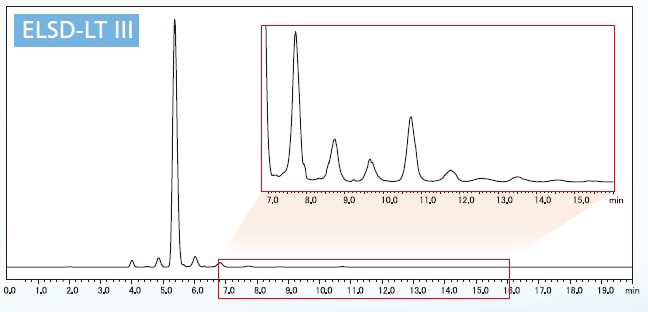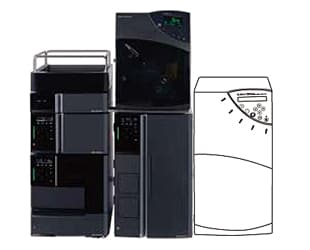ELSD-LT III
Evaporative Light Scattering Detector for HPLC

The evaporative light scattering detector (ELSD) is a general-purpose universal detector that can even detect components with no UV absorption, such as carbohydrates, lipids, surfactants, and synthetic polymers.*
With exceptional sensitivity, a wide dynamic range through Analytical Intelligence features, and easy operability using LabSolutions™ software, the ELSD-LT III contributes to more effective analysis in a wide variety of fields.
*Excluding some volatile compounds
Features
-
ELSDs can detect almost all compounds apart from volatile compounds. They detect irradiated light scattered by microparticles of target components that remain after the mobile phase has evaporated, meaning they can detect the compound which has the poor UV absorption or has that around short-wavelength where is strongly affected by the background absorption of the mobile phase.
-
A high-power laser source offers superior sensitivity not possible with previous ELSD models. The photometricallycontrolled laser ensures that the high sensitivity remains stable over long periods of operation.
-
The ELSD-LT III boasts a compact design with around 2/3 the height of the previous model, and can be installed on top of the LC unit. The width of the whole system is reduced, saving precious lab space.
-
News / Events
-
New Technical Report is available, Optimization of Supercritical Fluid Extraction Parameters for Vitamins D2, D3, and K1 from Pharmaceutical Preparations
New Technical Report is available, Optimization of Supercritical Fluid Extraction Parameters for Vitamins D2, D3, and K1 from Pharmaceutical Preparations
-
New Tips & Tricks is available, Automated Dilution and Preparation of Standard and Sample Solutions for Analysis
-
Shimadzu Corporation has released LabSolutions Detect, a software with AI Functionality to support Anomaly Detection for Liquid Chromatographs (LC).
LabSolutions Detect transforms your LC data review process by visualizing differences between accumulated reference data and daily sample data.
-
New Technical Report is available, A sustainable analytical approach for detecting extra virgin olive oil adulteration using Nexera™ UC
In this study, a fast, simple and green methodology was optimized to detect intentionally adulterated extra virgin olive oil EVOO with cheaper seed oils at different levels by means of subcritical fluid chromatography (subFC) with UV detection, followed by statistical analysis.
-
Shimadzu has released the new integrated LC system, i-Series.
The new i-Series integrated LC: Sustainable design. Reliable results. Uncompromising performance.
-
Core-shell Column: Analysis Basics Now Available.
Discover easy-to-understand insights into the fundamentals of analysis.









